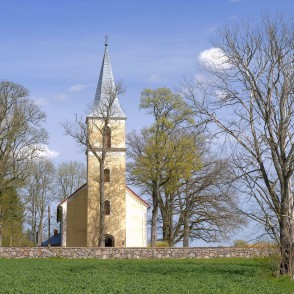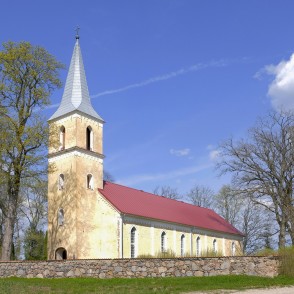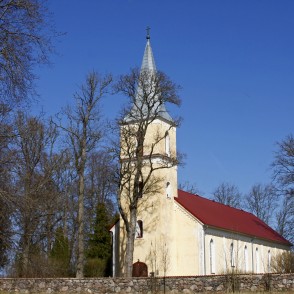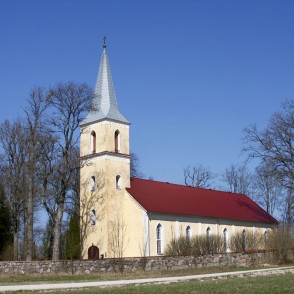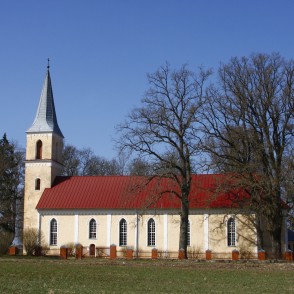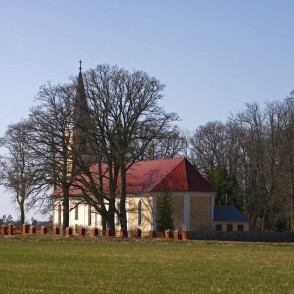The earliest evidences of Arlava church can be found already in year 1383. In 1665 a new church was built, in 1728 it was rebuilt, and was recognized as ruinous in 1777. The new masonry building was constructed in 1793, but the present appearance with Gothic style features the church got during the rebuilding of 1862/63. The church is an elongated single-aisle building, with a polygonal choir, sacristy and a rectangular bell tower with polygonal spire. The furnishings (19th century) of the church are especially charming. The altar painting "Mourning the Dead Christ" (1908, a copy by J. Röterman) original) is a masterpiece by C. Schönherr. The ceiling of the church is an original segment vaulting joined in a wooden construction. There is also an enormous metal chandelier (1893) with a splendid forged garland; and a smaller lustre with four angels that are sounding a trumpet. The organ (1865) that was built by the famous craftsman August Martin is very significant instrument in Latvian organ building history. It is one of the oldest survived instruments that were made by this organ builder. The North Kurzeme can be really proud of Arlava church. It is the biggest rural church of the region. The church is surrounded by a graveyard.
www.talsitourism.lv

